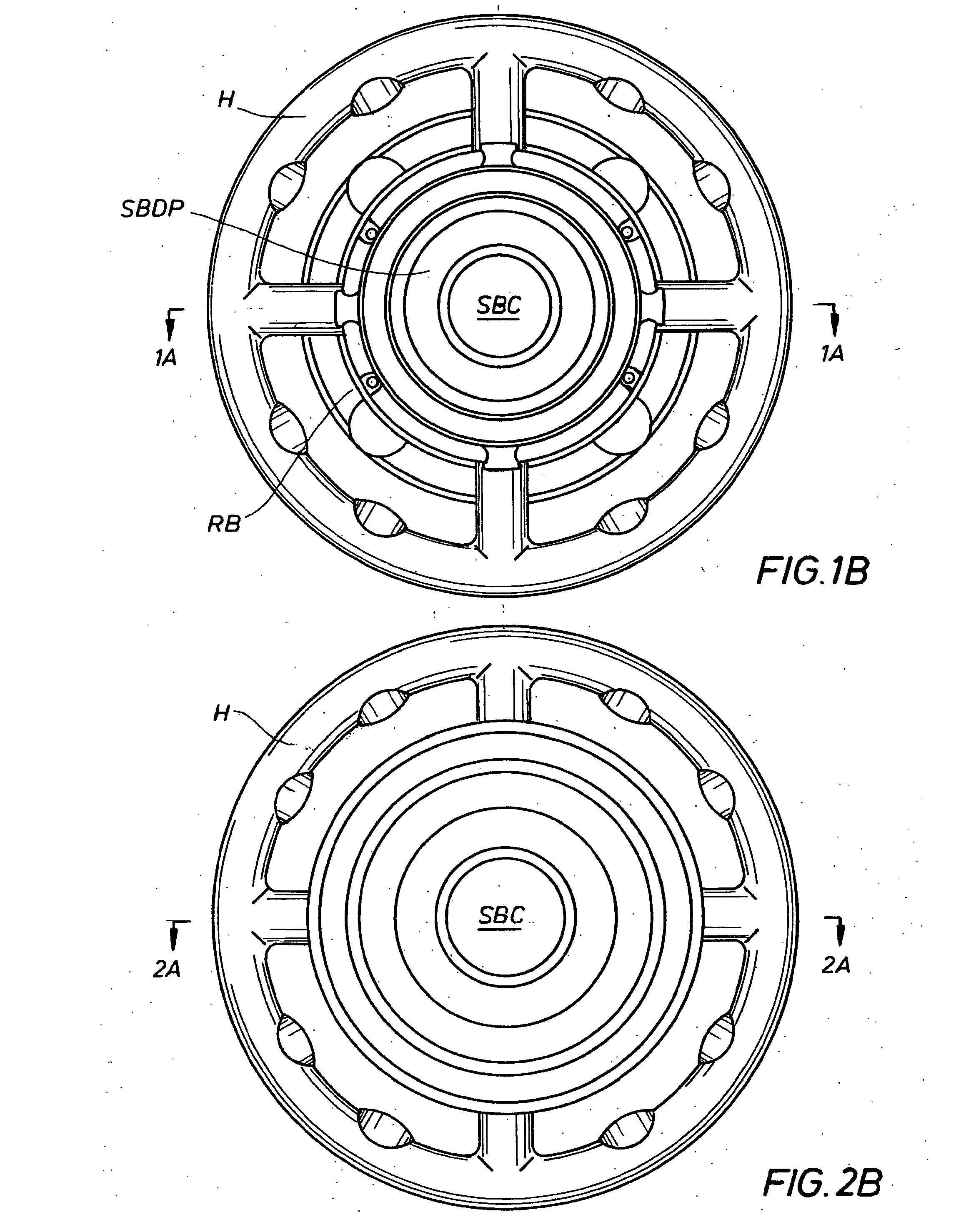Range enhanced fire fighting nozzle and method (centershot ii)
a fire-fighting nozzle and enhanced technology, applied in the field of fire-fighting nozzles, can solve the problems of increasing the size of the tank, adversely affecting the landing footprint of the foam, and melting of the nozzle due to heat, so as to minimize turbulence, maximize the head pressure, and save energy
- Summary
- Abstract
- Description
- Claims
- Application Information
AI Technical Summary
Benefits of technology
Problems solved by technology
Method used
Image
Examples
Embodiment Construction
[0033]To clarify the use of language and terms herein, “solid bore” is used to indicate a conduit with a solid crosssectional area. An “annular bore” defines a conduit with an annular crosssectional area. A “solid bore” nozzle has a discharge orifice that defines a solid crosssectional area. An annular bore or “fog” nozzle has a discharge orifice that defines an annular crosssectional area. Fire fighting nozzle discharge ports generally have one of these two structural configurations, “solid bore” or “annular bore.” The annular bore design is frequently referred to as “fog” design.
[0034]“Fog” nozzles are typically provided with a sliding outer sleeve, over the annular discharge orifice, which is used to select and to alternate between a “fog pattern” or a “straight stream pattern.” The annular discharge bore and port and sliding sleeve are structured in combination to provide this selection. A “straight stream pattern” of a fog nozzle optimizes its range. The straight stream dischar...
PUM
 Login to view more
Login to view more Abstract
Description
Claims
Application Information
 Login to view more
Login to view more - R&D Engineer
- R&D Manager
- IP Professional
- Industry Leading Data Capabilities
- Powerful AI technology
- Patent DNA Extraction
Browse by: Latest US Patents, China's latest patents, Technical Efficacy Thesaurus, Application Domain, Technology Topic.
© 2024 PatSnap. All rights reserved.Legal|Privacy policy|Modern Slavery Act Transparency Statement|Sitemap



